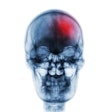
When was the last time you saw a mysterious mole on your patient?
That was the question Shannon Nanne, R.D.H., asked a packed seminar at the California Dental Association (CDA) fall meeting in San Francisco last week.
A few hands went up, and one participant said she found a suspicious mole on a patient that she measured and photographed before referring the patient to a dermatologist.
The result: a very grateful patient.
Skin cancer is the most common form of cancer, and dentists and hygienists can help detect the disease early by keeping a watchful eye on suspicious looking growths on their patients' skin, Nanne said.
The most common types of skin cancer include:
- Basal cell carcinoma
- Squamous cell carcinoma
- Melanoma
Melanoma, the most lethal of the three, begins in melanocytes (cells that make the pigment melanin). It may begin in a mole but can also begin in other pigmented tissues, such as the eye or the intestines.
Common risk factors for developing melanoma include:
- Family history
- Dysplastic nevi (mole)
- Weakened immune system
- More than 50 moles on the body
- Exposure to ultraviolet radiation
- Severe, blistering sunburns
- Freckles
- Fair skin
- Use of tanning beds before age 35
What kind of moles could be indicators of melanoma? Look for the following, according to Nanne:
Most moles are symmetrical and round. Look for those that change shape and become asymmetrical.
Most moles have even borders. Watch for moles that are uneven and irregular around the edge.
It is normal for moles to be a uniform brown color. A mixture of tan, brown, white, pink, red, gray, blue, and especially black in a mole suggests melanoma.
Most moles are small -- about 6 mm or smaller in diameter. If a mole becomes larger than the tip of a pencil eraser, it is time to have it checked out.
Melanoma may be present if color from the mole spreads into the surrounding skin, or if this skin becomes red or loses its color (becomes white or gray).
A mole may be melanoma if it itches; is painful, tender, scaly, flaky, oozing, or bleeding; has an open sore that does not heal; or has a hard lump in it.
Like most cancers, early detection of melanoma is the key to survival. If not found early, the cancer cells can spread through the bloodstream and the lymphatic system to form tumors in other parts of the body. Melanoma is much harder to control when it has metastasized.
Dentists and hygienists can play a key role in detecting skin cancer early by closely watching an abnormal mole to see whether it changes over time, Nanne said. Take pictures of the mole and compare its appearance at the next visit. If you feel that a mole should be removed so the tissue can be examined, do not hesitate to refer the patient to a dermatologist, according to Nanne.
Oral melanoma
Although oral melanoma is rare -- the oral mucosa is involved in less than 1% of diagnosed melanomas, according to Nanne -- it is important for dental professionals to be aware of the signs and symptoms.
The most common locations are the palate and maxillary gingival, Nanne noted. Metastatic melanoma most frequently affects the mandible, tongue, and buccal mucosa.
The risk factors for mucosal melanomas are unknown, she said. They have no apparent relationship to chemical, thermal, or physical events (such as smoking, alcohol, poor oral hygiene, irritation from teeth dentures, or other oral appliances) to which the oral mucosa is constantly exposed. Although benign, intraoral melanocytic proliferations (moles) occur and are potential sources of some oral melanomas, the sequence of events is poorly understood in the oral cavity.
To illustrate her case, Nanne showed slides of a male patient with extensive black-pigmented and irregularly bordered macula in the maxillary labial mucosa and midline facial gingival and one with a large, blue-black, irregularly bordered lesion on the upper lip.
The diagnosis in both cases: oral melanoma.
Nanne concluded her lecture by reminding the audience to stay alert and remember that an oral cancer screening is more than just an oral exam.
"What have you noticed in your daily practice?" she had asked attendees earlier in the lecture.
"What are you going to notice now?" was the thought she left them with.
Copyright © 2009 DrBicuspid.com



















